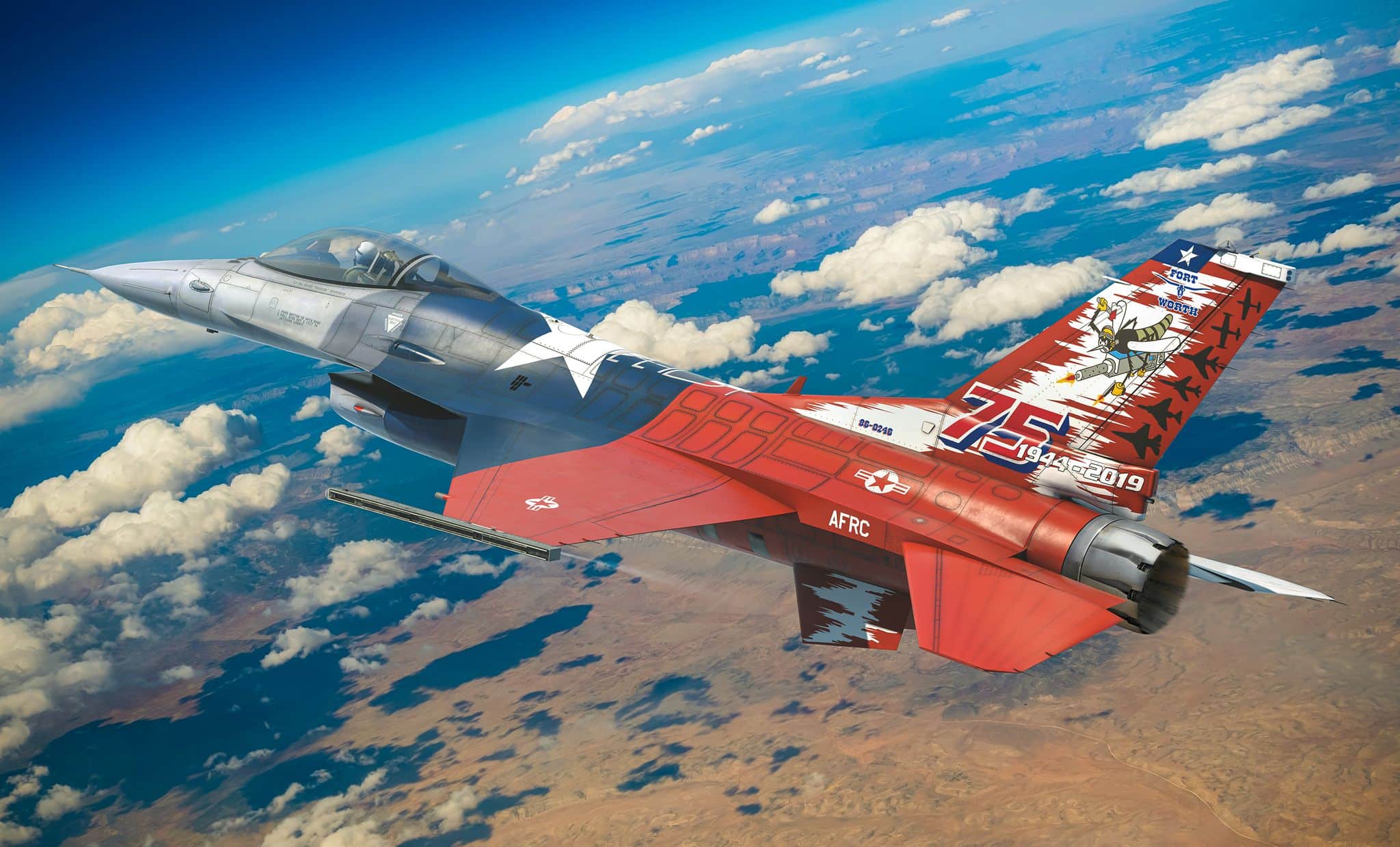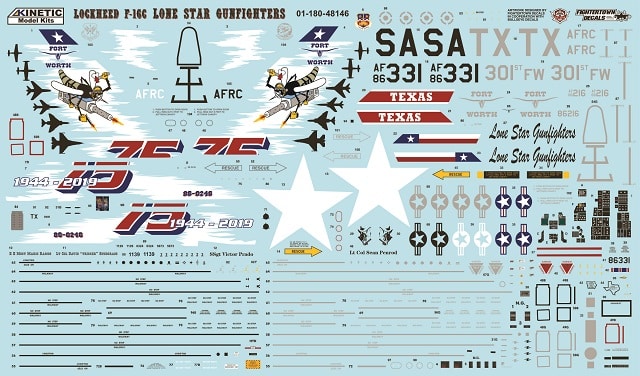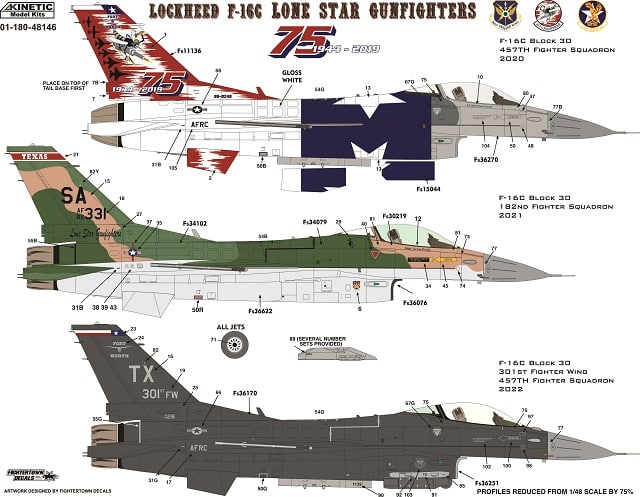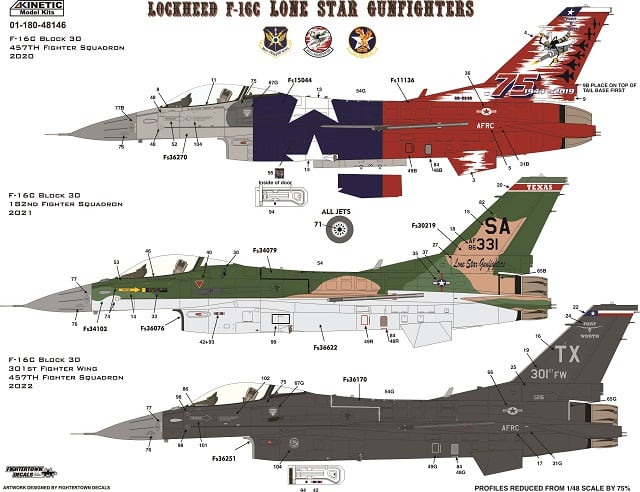Exciting news for aviation model enthusiasts! Don’t miss out on the special edition F-16C Viper in Gold Series, exclusively released for IPMS Nationals 2023.
F-16C Viper in Gold Series for the IPMS NATIONALS 2023
Featuring stunning box art by Antonis Karidys and decals by Fightertown Decals and Bullseye Model Aviation, this limited edition kit (K48146) showcases the “The Lone Star Gunfighters” Block 30 Fighting Falcon variant.
The F-16C Viper: A High-Performing Fighter Jet for Modern Warfare
If you’re interested in military aviation, then the F-16C Viper is a fighter jet that you’re probably familiar with. This plane has been used by the United States Air Force and many other countries around the world for over 40 years, and it’s still considered to be a top-performing fighter jet today. In this article, we’ll take a closer look at the F-16C Viper, including its history, capabilities, and current use in modern warfare.
The F-16C Viper
The F-16C Viper is a single-engine, supersonic fighter jet that was originally developed by General Dynamics (now Lockheed Martin) for the United States Air Force in the 1970s. Since then, it has been exported to many countries around the world and has undergone many upgrades and improvements to keep it relevant in modern warfare.
Some key facts about the F-16C Viper include:
-
Maximum speed: Mach 2 (1,500 mph)
-
Range: 2,665 km (1,654 mi)
-
Service ceiling: 15,000 m (50,000 ft)
-
Armament: 1× 20 mm M61 Vulcan cannon, plus a variety of missiles and bombs
Now, let’s take a closer look at some of the key features and capabilities of the F-16C Viper.
Key Features and Capabilities of the F-16C Viper
1. Versatility
One of the key features of the F-16C Viper is its versatility. This plane is capable of performing a wide range of missions, including air-to-air combat, air-to-ground combat, and reconnaissance. Its ability to switch between these roles quickly and easily makes it a valuable asset in modern warfare.
2. Maneuverability
The F-16C Viper is known for its exceptional maneuverability, which makes it a formidable opponent in dogfights. Its lightweight frame and powerful engine allow it to perform tight turns and high-G maneuvers with ease, giving it a significant advantage in air combat.
3. Advanced Avionics
Another key feature of the F-16C Viper is its advanced avionics. This plane is equipped with a range of sensors and systems that allow the pilot to maintain situational awareness at all times. This includes a radar system that can detect and track enemy planes, as well as a variety of communication and navigation systems.
4. Weapon Systems
The F-16C Viper is armed with a variety of weapons systems, including a 20 mm M61 Vulcan cannon and a range of missiles and bombs. These weapons are capable of taking out a wide range of targets, including enemy planes, ground vehicles, and structures.
Current Use of the F-16C Viper in Modern Warfare
The F-16C Viper is still in use by the United States Air Force, as well as many other countries around the world. In recent years, it has been used in a variety of conflicts, including the ongoing war in Syria and the fight against ISIS in Iraq and Syria.
Some of the key ways in which the F-16C Viper has been used in modern warfare include:
-
Air-to-air combat: The F-16C Viper has been used to engage and destroy enemy planes in many conflicts, including the Gulf War, the war in Iraq, and the war in Syria.
-
Air-to-ground combat: The F-16C Viper has also been used to strike a variety of ground targets, including enemy vehicles, structures, and personnel.
Upgrades and Improvements to the F-16C Viper
Over the years, the F-16C Viper has undergone many upgrades and improvements to keep it relevant in modern warfare. Some of these upgrades include:
1. Structural Upgrades
To increase the durability and longevity of the F-16C Viper, the plane has undergone many structural upgrades. These upgrades include reinforced landing gear, stronger wings, and improved fuel tanks.
2. Avionics Upgrades
To keep up with advances in technology, the F-16C Viper has also undergone many avionics upgrades. These upgrades include improved radar systems, updated navigation systems, and enhanced communication systems.
3. Weapon System Upgrades
To increase the effectiveness of the F-16C Viper’s weapon systems, the plane has undergone many weapon system upgrades. These upgrades include the integration of new missiles and bombs, as well as upgrades to the aircraft’s cannon.
FAQs About the F-16C Viper
Here are some frequently asked questions about the F-16C Viper:
1. How fast can the F-16C Viper fly?
The F-16C Viper has a speed of Mach 2, or around 1,500 mph.
2. How many weapons can the F-16C Viper carry?
The exact number of weapons that the F-16C Viper can carry varies depending on the specific configuration of the plane. But, it is capable of carrying a variety of missiles and bombs, as well as a 20 mm M61 Vulcan cannon.
3. How long can the F-16C Viper stay in the air?
The range of the F-16C Viper is around 2,665 km or 1,654 miles. This means that the plane is capable of staying in the air for several hours, depending on the mission and the configuration of the plane.
4. How many F-16C Vipers are currently in service?
There are currently several hundred F-16C Vipers in service around the world, including in the United States, Europe, and the Middle East.
5. What is the cost of an F-16C Viper?
The cost of an F-16C Viper varies depending on the specific configuration and the country that is purchasing the plane. But, a new F-16C Viper can cost anywhere from $50 million to $100 million.
6. What is the maximum altitude of the F-16C Viper?
The F-16C Viper has a service ceiling of 15,000 m or 50,000 ft. This means that it is capable of flying at very high altitudes.
Conclusion
The F-16C Viper is a high-performing fighter jet that has been in use for over 40 years. Its versatility, maneuverability, advanced avionics, and powerful weapon systems make it a valuable asset in modern warfare. With many upgrades and improvements over the years, the F-16C Viper is still a top-performing fighter jet today and is likely to remain in service for many years to come.
What’s your Reaction?
+1
+1
1
+1
1
+1
+1
+1
+1





